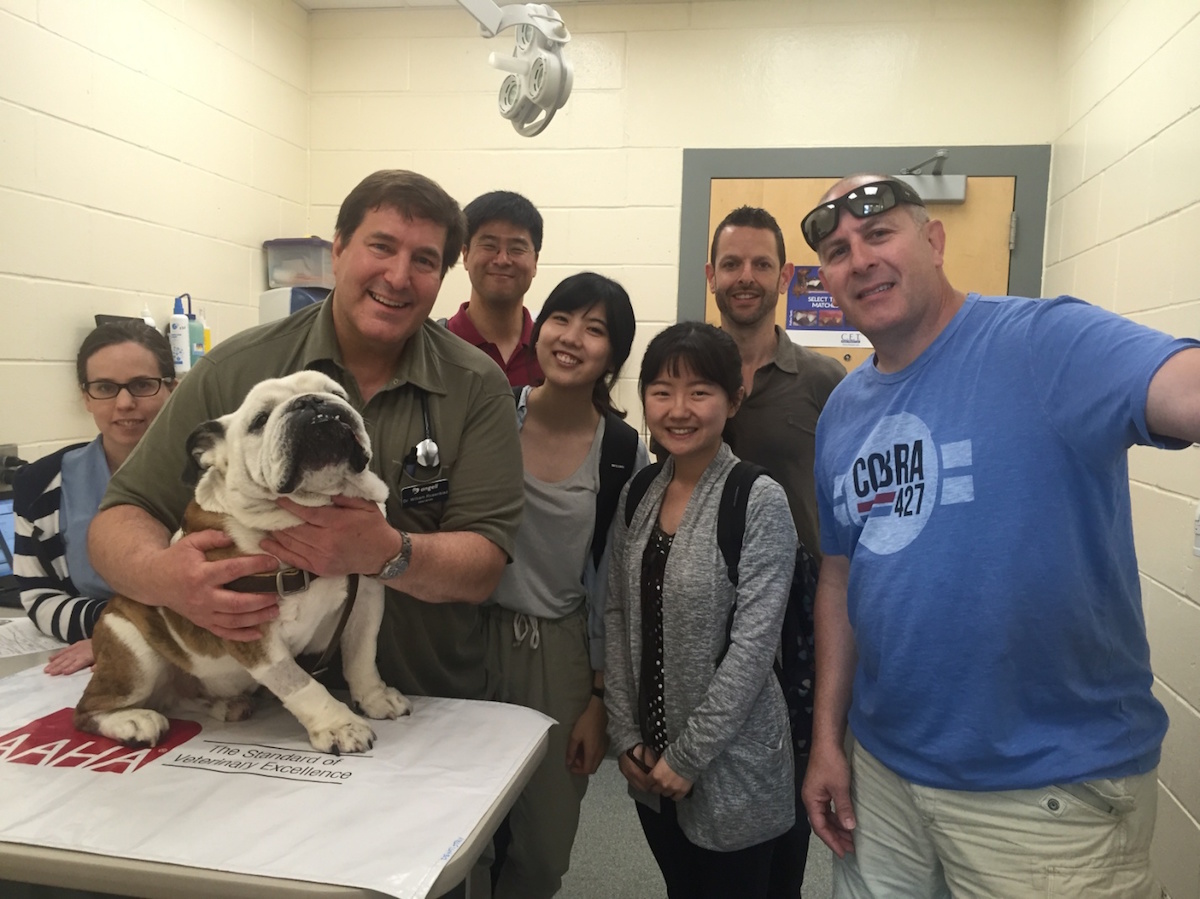Brigham and Women’s Treated a Local Bulldog Using “Bio Glue”

Little Papi and his surgery team/photo provided.
Little Papi has had a tough go of it.
Little Papi—a Boston bulldog named in honor of Big Papi—was suffering from oronasal fistula, a prevalent condition among cats and dogs that leads to a large, painful hole in the mouth. He underwent three separate surgeries, but each one failed to close the wound.
It wasn’t until Brigham and Women’s Hospital (BWH) bioengineer Jeffrey Karp and Angell Animal Medical Center dental surgeon William Rosenblad began working together that Little Papi found some relief. Using a “bio glue” developed by Karp—a self-professed dog lover—the team has the bulldog on the road to recovery.
The adhesive, which binds oral tissue together and then dissolves, is now being considered as a treatment for both domesticated animals and for humans who experience complications from cleft palate surgery, and it could eventually be used in place of invasive procedures like open heart surgery. The degradable, non-toxic liquid bandage is strong and elastic enough to hold tissue together when activated by light. It also helps a patient’s cells move across the damaged area and form new tissue.
“Our team turns to nature for inspiration for creating new biomaterials and devices, and we most often think about opportunities for treating human diseases and conditions,” Karp said in a statement. “We are truly delighted and inspired that the materials developed in the lab may be able to help alleviate pain in pets like Papi as well.”
Little Papi was the perfect “guinea pig” for the new formula. The pup’s vets were out of options after several failed attempts to repair the (extremely uncomfortable) hole in the roof of his mouth, the result of diseased tooth extractions. Karp’s bio glue provided a new avenue for treatment—and one that will hopefully have Little Papi up and barking again in no time.
“It was amazing to collaborate with Dr. Rosenblad and to have both intuitions’ full support to help Papi,” Karp said. My new goal now is to improve quality of life for both patients and pets.”


